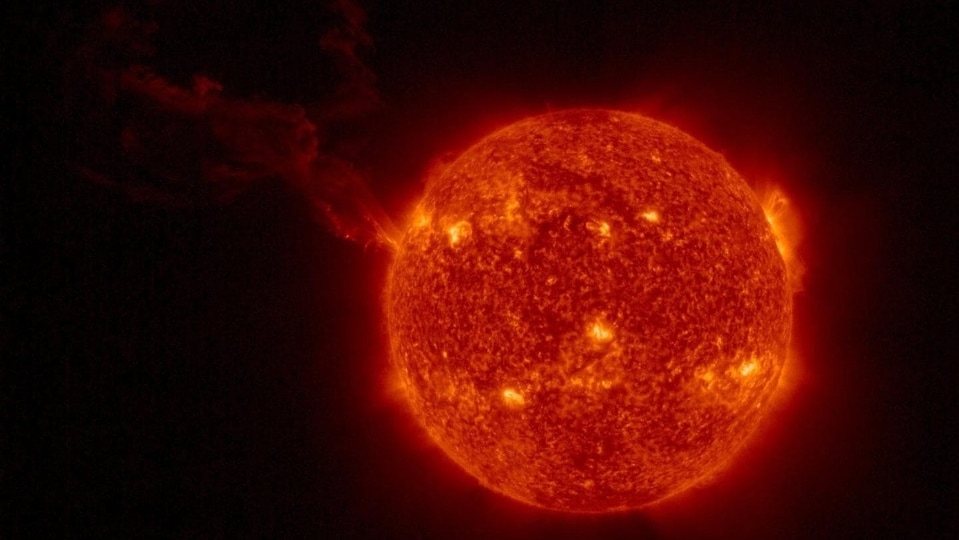Multiple solar flares shot off by Sun, strong geomagnetic storms to STRIKE Earth; NASA explains
After multiple solar flares were set off on the Sun, NOAA predicts three big geomagnetic storms that will strike the Earth starting today. NASA has explained what can happen.

The Earth is going to be bombarded by multiple geomagnetic storms in the coming days. On Monday, March 28, the Sun witnessed an intense period of solar activity which produced multiple M and C-class solar flares. The National Oceanic and Atmospheric Administration (NOAA) stated that resultant geomagnetic storms will hit the Earth starting today, March 30. More solar storms are expected on March 31 and April 1st. According to scientists, the next few days will see more solar activity and further intense solar storms should be expected. The more frequent geomagnetic storm strike is related to the particularly active solar region AR2975, which came into the Earth's view last week. Since then, it has produced 6 M-class solar flares, 10+ C-class solar flares, and two halo CMEs, with more expected in coming days. This is a very concerning situation because if the Sun unleashes a G5 class geomagnetic storm, it can cause massive destruction.
Among the geomagnetic storms bound to hit the Earth, one is a G3 class storm which can cause moderate damage to satellites and communications systems. This particular solar storm will hit the Earth on March 31 and NOAA has issued a strong geomagnetic storm watch alert for it. Dr. C. Alex Young, a NASA heliophysicist explained, “NOAA has updated its March 31 geomagnetic storm watch to G3 with a G1 watch for March 30 and a G2 watch for April 1. Waiting for those to CMEs to get to us. Then maybe aurora as far south as e.g. Illinois, New York, and Oregon in the US”.
Massive geomagnetic storms bound for Earth
As the solar activity on the Sun intensifies due to approaching solar maximum, the solar storms have been increasing in frequency. In the last week we witnessed a couple of G1 class geomagnetic storms which only resulted in auroras or northern lights. But this time around, G2 and G3 class solar storms will also be hitting Earth. While they aren't the worst when it comes to disrupting the communication systems and damaging the satellites, they are still capable of it. The worst concern is if the solar activities get more severe, we might even be headed for a G5 geomagnetic storm like the extremely destructive Carrington event.
What can a powerful geomagnetic storm do
A strong geomagnetic storm can not only damage satellites in its path due to heat and radiation which can affect the sensitive instruments, but also disrupt GPS systems, mobile phones, internet services and even electricity grids. This impacts everything from airlines navigation systems to hospitals and emergency services. While a severe solar storm is still not going to harm humans directly, their attack on our technology can definitely cripple us and cause massive devastation. Humans are protected from solar storms by Earth's atmosphere, but the same does not apply to electronics.
Catch all the Latest Tech News, Mobile News, Laptop News, Gaming news, Wearables News , How To News, also keep up with us on Whatsapp channel,Twitter, Facebook, Google News, and Instagram. For our latest videos, subscribe to our YouTube channel.































